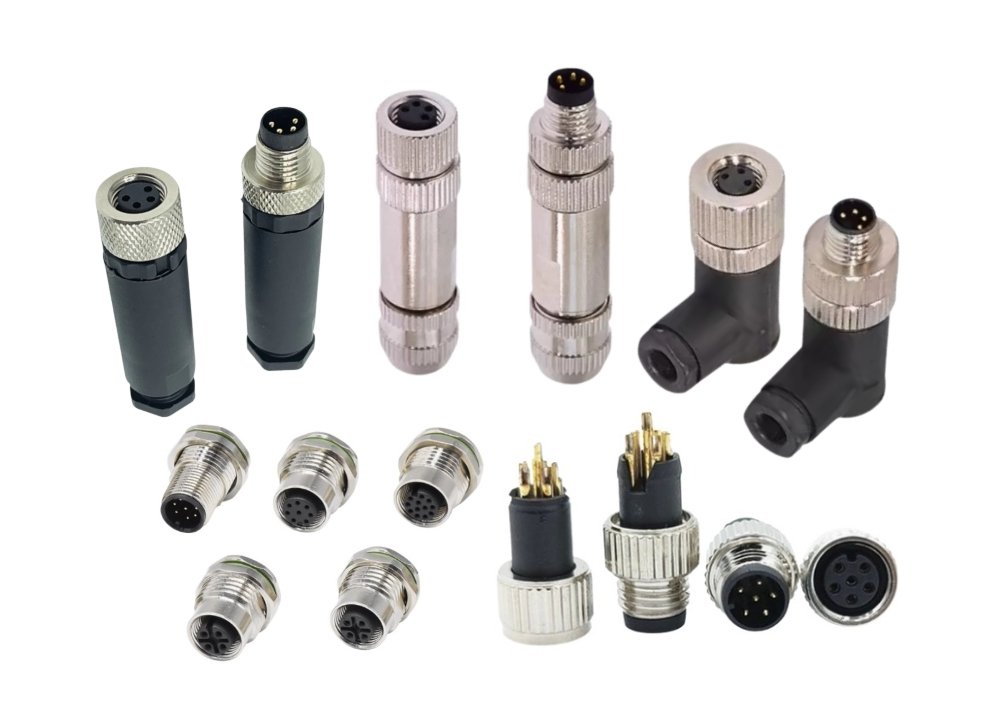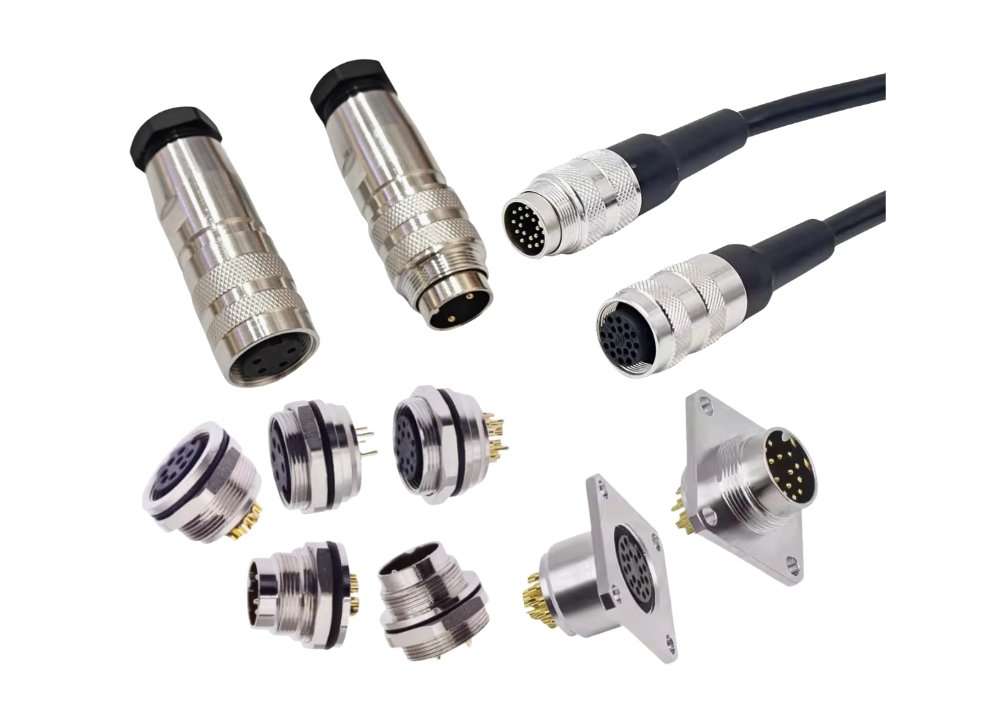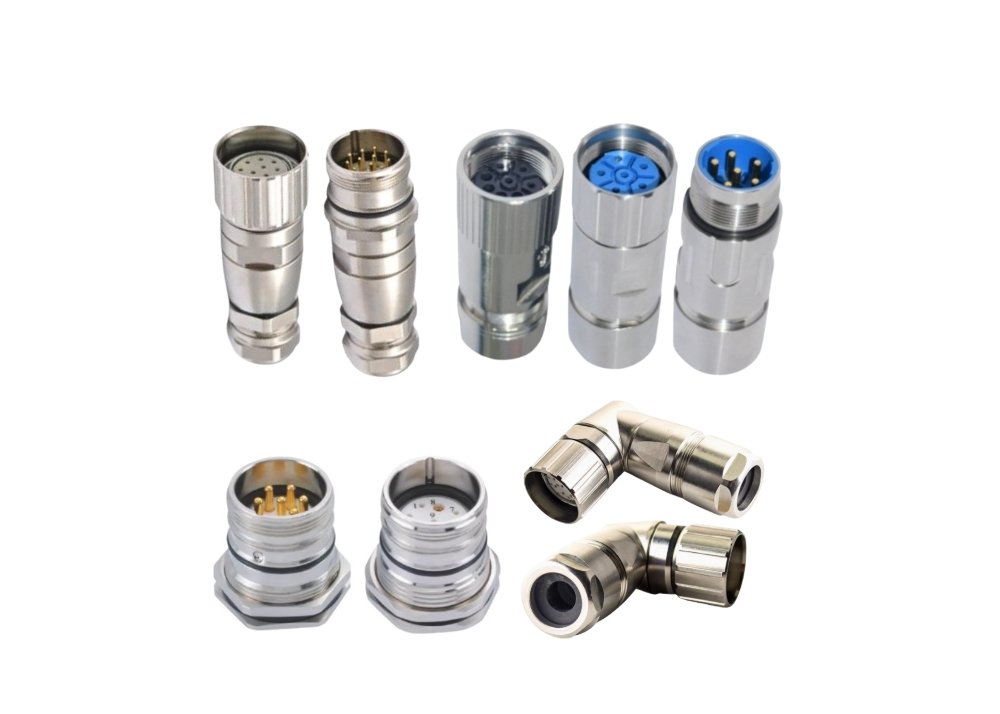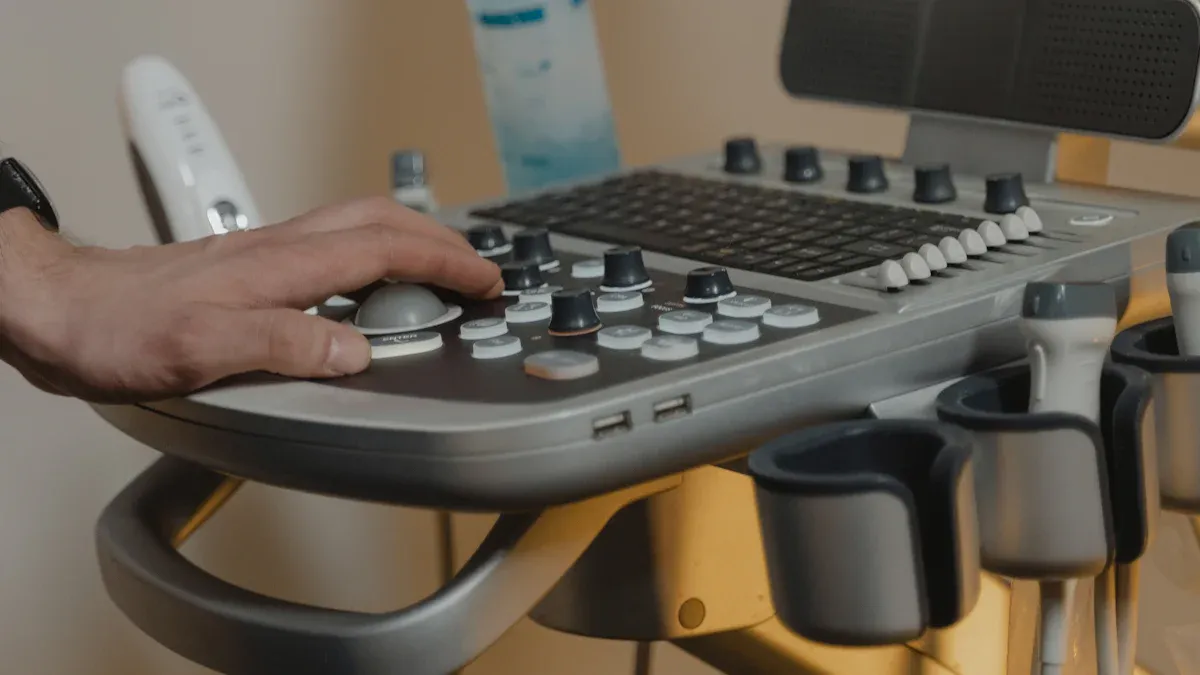
Micro-d connectors drive innovation in medical device engineering by enabling compact, durable interconnect solutions. Recent industry reports highlight that micro-d supports miniaturization and high-performance requirements, with growing adoption in patient monitoring, diagnostic equipment, and surgical instruments. Manufacturers rely on micro-d and M8 connector designs for robust performance in mission-critical applications. Connector factory advances in customization and electrical performance foster secure, high-density connections. The use of biocompatible materials and reliable Type B connector arrangements enhances patient safety and device flexibility.
- Micro-d connectors withstand vibration, moisture, and temperature fluctuations.
- Medical sector trends favor micro-d for portable, minimally invasive devices.
Micro-D Connectors: Transforming Medical Device Design
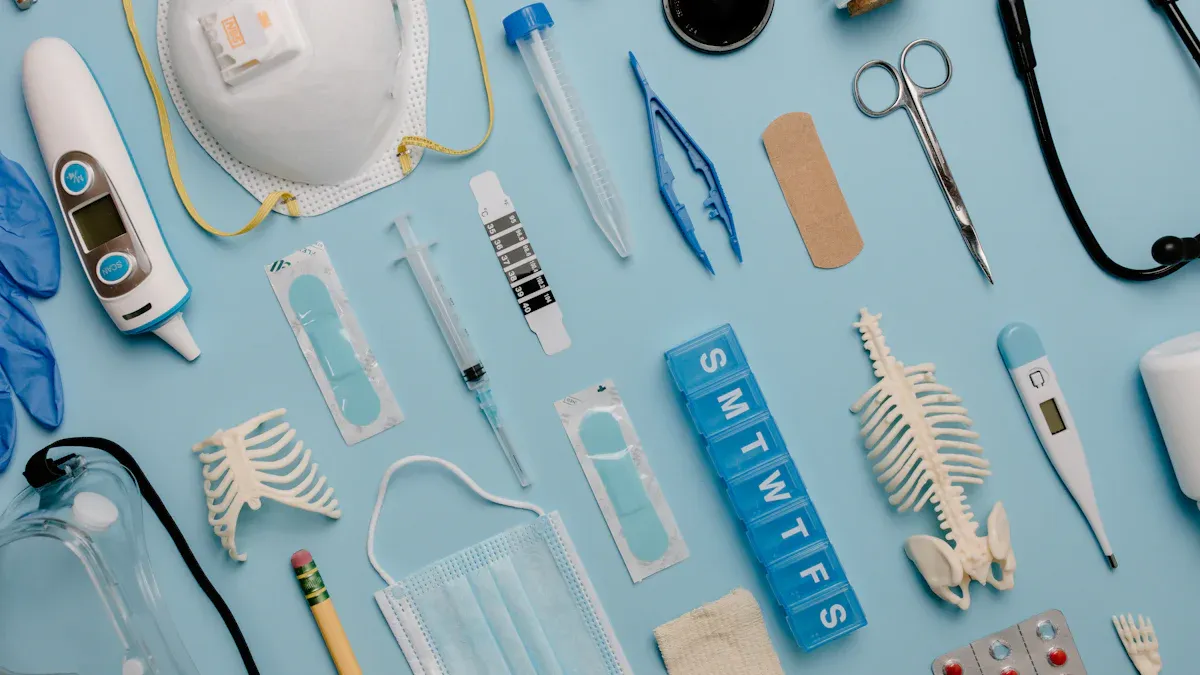
Miniaturization and High-Density Interconnects
Space-saving for portable and wearable medical devices
Micro-d connectors have revolutionized the way engineers approach medical device miniaturization. These connectors provide microminiature, high-density rectangular solutions that fit into the tightest spaces. Medical device manufacturers now create portable and wearable devices that enhance patient comfort and support care beyond traditional clinical settings.
- Micro-d connectors allow integration of power, data, and sensor signals within a small footprint.
- Devices such as portable monitors and wearable health trackers benefit from reduced size and weight.
- The trend toward smaller, lighter, and higher-performance medical devices aligns with the evolution of healthcare delivery.
A comparison of traditional D connectors and micro-d connectors highlights the advantages for miniaturization:
| Feature | Traditional D Connector | Micro-D Connector |
|---|---|---|
| Size and Footprint | Larger footprint | Smaller footprint enabling miniaturization |
| Contact Density | Lower contact density | Higher contact density for more connections |
| Application Focus | Broad industrial use | High-performance medical, aerospace, military |
| Standards Compliance | N/A | MIL-DTL-83515 military standard |
| Miniaturization Benefit | Limited by size | Enables compact medical device design |
Micro-d connectors use Twist Pin contact technology. Multiple fine strands of beryllium-copper alloy twist and compress during insertion, creating many reliable electrical contact points. Gold plating enhances operational security and reliability, meeting military standards. This connector design supports high performance in compact medical devices.
Supporting complex circuitry in compact form factors
Medical devices often require complex circuitry to deliver advanced features. Micro-d connectors support these needs by maintaining signal integrity and durability in challenging environments. Customization options allow engineers to meet stringent electrical, mechanical, and environmental requirements for applications such as electrophysiology, monitoring, therapeutics, and diagnostic imaging. Integration into complex cable assemblies and development of reusable, sterilizable interconnect solutions further improve device reliability and functionality.
Note: Micro-d connectors enable device designers to pack more functionality into smaller devices without sacrificing performance or reliability.
Enhancing Reliability and Patient Safety
Consistent electrical performance in critical applications
Reliability remains a top priority in medical device design. Micro-d connectors meet IEC 60601 requirements, including strict creepage and clearance distances essential for patient protection. These connectors deliver consistent electrical performance, even in demanding environments. Touch-proof designs prevent accidental contact with electrical contacts, verified by standardized testing. Locking mechanisms prescribed by IEC standards prevent accidental disconnections during procedures, ensuring uninterrupted operation.
Reducing risk of connector failure in life-saving devices
Connector failure in life-saving devices can have serious consequences. Micro-d connectors reduce this risk through several features:
- High-density connectors minimize complexity by replacing multiple off-the-shelf connectors, reducing operator error.
- Custom high-density connectors meet exact safety distances and ergonomic needs, ensuring compliance and avoiding wasted space.
- Advanced applications, such as cardiac electrophysiology catheters, benefit from many electrodes in a small device, improving diagnostic accuracy and patient outcomes.
- Long cycle life and robust locking mechanisms contribute to device reliability and patient safety.
Micro-d connectors like the Smiths Interconnect D04 series offer high contact density, enabling smaller, lighter, and more functional medical devices. Rigorous testing ensures insulation resistance and compliance with safety standards. Features such as push-button quick disconnect, finger-proof isolators, and ergonomic one-handed mating reduce risks of incorrect connections and accidental disconnections. Custom solutions tailored to specific medical applications further enhance compliance and ergonomics.
Micro-D Connectors Specifications for Medical Applications
Size, Pin Configuration, and Contact Arrangements
Standard sizes and contact densities for medical needs
Medical device engineers rely on precise specifications when selecting a micro-d connector. These connectors offer a range of shell sizes and contact densities to address diverse medical requirements. The standard micro-d connector types feature:
- Seven shell sizes, supporting configurations from 9 to 51 contacts.
- 25 AWG pins or sockets, arranged on a 0.050 inch (1.27 mm) pitch.
- Twist pin technology, which ensures high reliability and dense contact arrangements.
- Shells made from aluminum with electroless nickel or stainless steel finishes, enhancing environmental protection.
- Gold-plated copper alloy contacts, rated for 3 Amps, constrained for secure electrical connections.
- Silicone elastomer interfacial seals, providing moisture and humidity resistance.
- Rugged construction, suitable for moisture-sealed and demanding medical environments.
- Standard, heavy-duty, and ultra-small variants (MSW, MSWH, MSWU) to match specific application needs.
These features ensure that micro-d connector types meet the electrical and mechanical specifications required for critical medical devices.
Customization options for unique device requirements
Customization plays a vital role in medical device design. Micro-d connectors can be tailored with special keying, grounding, and space-grade processing. These modifications allow the connector to fit unique packaging constraints, including size, weight, and shape. Engineers can specify features such as IP ratings, push-pull mechanisms, and sterilization-compatible materials. This flexibility ensures that the connector meets stringent medical standards and operational demands. Customization supports reliable and safe interconnect solutions for advanced diagnostics and therapeutic equipment.
Material Selection and Sterilization Resistance
Biocompatible materials for patient safety
Material selection directly impacts patient safety and device performance. Medical-grade micro-d connectors use biocompatible materials that comply with ISO 10993 standards. These materials include stainless steel, titanium, cobalt-chromium alloys, PEEK, silicone, TPE, and ceramics. Each material offers unique benefits for specific medical applications.
| Material | Key Properties and Uses in Medical Devices |
|---|---|
| Stainless Steel | Corrosion-resistant, durable, biocompatible, suitable for sterilization; used in surgical instruments and implants. |
| Titanium | Excellent biocompatibility, corrosion-resistant, lightweight, high strength; used in orthopedic and dental implants. |
| Cobalt-Chromium Alloys | Highly biocompatible, corrosion-resistant, strong, minimal allergic reactions; used in implants like joint replacements. |
| PEEK | Lightweight, high strength, durable medical-grade plastic; suitable for weight- and cost-sensitive applications. |
| Silicone and TPE | Biocompatible, flexible, temperature resistant; used in tubing, seals, prosthetics. |
| Ceramics | Biocompatible, hard, wear-resistant; used in implants and surgical instruments. |
Connector types for implantable devices often use gold plating, Kovar alloy, and glass-sintered seals to achieve hermetic sealing and biocompatibility. These choices ensure safe and reliable operation within the human body.
Compatibility with autoclave and chemical sterilization
Sterilization resistance is essential for reusable medical connectors. Manufacturers design micro-d connector types with high-strength, corrosion-resistant materials and robust sealing. These features enable compatibility with autoclave, EtO, Sterrad, gamma radiation, and chemical sterilization methods. The following table highlights how leading connector types achieve sterilization resistance:
| Feature / Manufacturer | Material and Construction | Design Features | Sterilization Compatibility | Durability and Testing |
|---|---|---|---|---|
| Fischer Connectors Core Series Plastic Connectors | High-strength, fully insulated plastic; corrosion-resistant | SureGrip plug bodies for gloved handling; color-coded plugs; push-pull locking; sealed to IP68 | Compatible with autoclave, EtO, Sterrad, gamma radiation, chemical sterilization | Rated for 5,000 mating cycles; resistant to temperature variations |
| LEMO REDEL SP Plastic Connectors | Plastic shells with chemical and shock resistance | Ergonomic grip; color-coding and keying; recessed latch sleeve; IP50 protection | Compatible with chemical sterilization and autoclave | Operating temperature -50°C to 170°C; designed for multiple cable diameters |
| Smiths Interconnect D Series Quick-Disconnect | High-strength polymer; Hypertac® hyperboloid contacts | D-shaped flange for orientation; panel-mount receptacles with Hypertac sockets | Withstands up to 20 autoclave cycles; compatible with EtO, Sterrad | Up to 100,000 mating cycles on receptacles; 2,500 on plugs |
| ODU Silicone-Overmolded Assemblies | Biocompatible silicone overmolding; hygienic surfaces | Smooth transitions; haptic surface treatment to reduce stick-slip | Withstands up to 500 autoclave cycles; chemical resistance; ISO 10993-5 compliant | Rated for 5,000 mating cycles; temperature range -20°C to +120°C |
Designers select connector types that maintain performance after repeated sterilization cycles, ensuring long-term reliability and patient safety.
Environmental Protection and IP Ratings
Dust and fluid ingress protection in clinical settings
Micro-d connector specifications often include high IP ratings to prevent dust and fluid ingress. The IEC 60529 standard defines these ratings, which are critical for maintaining device integrity in clinical environments. The following chart illustrates the protection levels for dust and liquid ingress:

Connectors rated IP67 or IP68 provide dust-tight sealing and withstand immersion in water. These features prevent contamination and ensure reliable signal and power transmission in medical devices.
Ensuring longevity in harsh medical environments
Longevity and reliability are essential for medical connectors exposed to harsh conditions. Manufacturers use advanced plastic shells that resist corrosion, moisture, chemicals, and UV exposure. Precision contact designs allow connectors to endure thousands of mating cycles and mechanical stresses. Miniaturized, lightweight construction improves shock and vibration resistance, which is critical for wearable and portable medical devices. Case studies show that micro-d connectors support complex sensors and communication modules without compromising comfort or performance. These specifications ensure continuous operation in emergency rooms, clinics, and home care environments.
EMI/RFI Protection and Signal Integrity
Integrated EMI filters for sensitive electronics
Sensitive medical electronics demand robust protection against electromagnetic interference (EMI) and radio-frequency interference (RFI). Micro-d connector specifications often include advanced shielding and filtering features to ensure reliable operation in environments filled with electronic noise. Manufacturers design these connectors with 360° shielding, integrated transient voltage protection, and environmental sealing. These features help maintain the integrity of signals in critical medical applications.
The following table compares several micro-d style connector series and their EMI/RFI protection features, highlighting their suitability for medical electronics:
| Connector Series | EMI/RFI Protection Features | Shielding Efficacy | Suitability for Medical Electronics | Additional Protection Features |
|---|---|---|---|---|
| I-PEX ZenShield (MHF 7S) | 360° EMC shielding, unique stripline-terminated signal pin in grounding ring | High EMI performance in mmWave, 50Ω impedance, operates up to 15GHz | Micro-coaxial, microminiature footprint suitable for sensitive electronics | UL94 V-0 housing, halogen-free, RoHS/REACH compliant |
| Amphenol Diode Connectors | Integrated transient voltage protection within connector housing | Low impedance, nanosecond response, protects against EMI, ESD, EMP | Suitable for sensitive circuits like TTL lines in medical electronics | Unipolar/bipolar diode designs, repairable/fixed, MIL-spec compatible |
| LEMO K Series | 360° EMI shielding with >95dB efficacy at 10MHz, ruggedized design | >95dB at 10MHz, >80dB at 1GHz | Modular, rugged, IP68 sealed connectors widely used in medical applications | Push-pull latching, multiple shell materials and plating options |
| NorComp 821K Series QUIK-LOQ | 360° EMI/RFI shielding with 75dB at 10MHz, 40dB at 1GHz, environmental sealing | 75dB at 10MHz, 40dB at 1GHz, IP67 rated | Small, ruggedized push-pull connectors suitable for medical electronics | High-temp silicone gaskets, RoHS compliant, 5,000 mating cycles |
| Amphenol Pcd Nano-Pegasus | EMI shielding 40–60dB depending on frequency, single-piece housing | 40–60dB EMI shielding, IP67 sealed | Small, lightweight, suitable for sensitive aerospace and medical sensing | Shock/vibration resistant, gold-plated contacts, quarter-turn cam lock |
Note: Integrated EMI filters and shielding in micro-d connector specifications protect sensitive circuits from disruptive interference, ensuring stable device operation.
A visual comparison of shielding efficacy among these connectors further illustrates their high performance in medical environments:
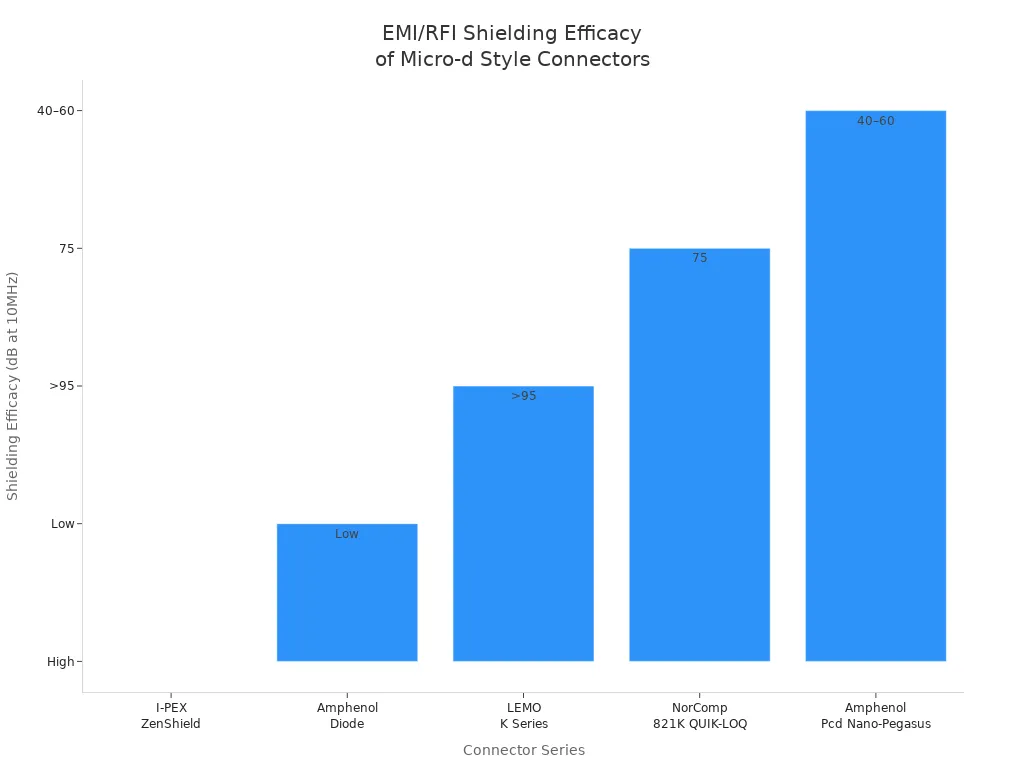
Maintaining signal quality in high-interference environments
Medical devices often operate in settings with significant electromagnetic noise, such as hospitals filled with diagnostic equipment and wireless communication systems. Micro-d connector specifications address these challenges through several design strategies:
- Manufacturers use medical-grade plastics, metals, ceramics, and high-performance polymers to ensure durability and consistent electrical contact.
- Hermetic sealing prevents moisture, dust, and contaminants from degrading signal quality.
- Metal housings and grounded chassis connections provide effective EMI shielding.
- Gold-plated contacts resist oxidation and fretting corrosion, maintaining low resistance and stable signal transmission.
- Precise impedance matching and robust mechanical designs reduce signal reflection and preserve signal integrity.
Micro-d connectors must withstand wide temperature ranges, vibration, and humidity. These features collectively ensure reliable power delivery and data transmission, minimizing signal loss and interference in critical medical applications.
Tip: Consistent signal integrity in high-interference environments is essential for accurate diagnostics and patient safety.
Mechanical Durability and Lifecycle
High mating cycles for repeated use
Medical devices require connectors that can endure frequent connections and disconnections without compromising performance. Micro-d connector specifications typically guarantee thousands of mating cycles, supporting long-term reliability in demanding clinical settings. The following table summarizes typical mechanical durability ratings for micro-d connectors used in medical applications:
| Connector Model | Mechanical Durability (Mating Cycles) | Compliance Standard | Application Environment |
|---|---|---|---|
| MDMH Hermetic Micro-D | 250 | Hermetic sealing | Medical and other hermetic applications |
| Low Profile Micro-D Straight Thru-Hole (DD) | Minimum 2,000 | Meets or exceeds MIL-DTL-83513 | Rugged, high reliability including medical |
| Single Row Micro-D Discrete Wired (WD) | Minimum 2,000 | Meets or exceeds MIL-DTL-83513 | High reliability including aerospace, military, and medical |
Designers select the appropriate connector model based on the required number of mating cycles and the specific application environment. Hermetic connectors, while offering lower mating cycles, provide essential sealing for implantable or sterilizable devices.
Vibration and shock resistance in mobile and wearable devices
Mobile and wearable medical devices face constant movement, shocks, and vibration. Micro-d connector specifications address these challenges with ruggedized construction and advanced contact technology. For example, Fischer Connectors’ MiniMax™ Series features ultraminiature, IP68-sealed connectors engineered for body-worn medical equipment. These connectors withstand up to 5,000 mating cycles and endure harsh conditions, ensuring reliable operation in dynamic environments.
Micro-d connectors from Sunkye meet or exceed MIL-DTL-83513 standards, which specify high resistance to vibration and shock. Twist pin contacts enhance performance reliability and maintain stable electrical connections under mechanical stress. This robust design supports high performance in critical medical applications, where device failure is not an option.
Block Quote: Reliable mechanical durability and shock resistance in micro-d connectors directly contribute to patient safety and device longevity.
Applications of Micro-D Connectors in Medical Devices
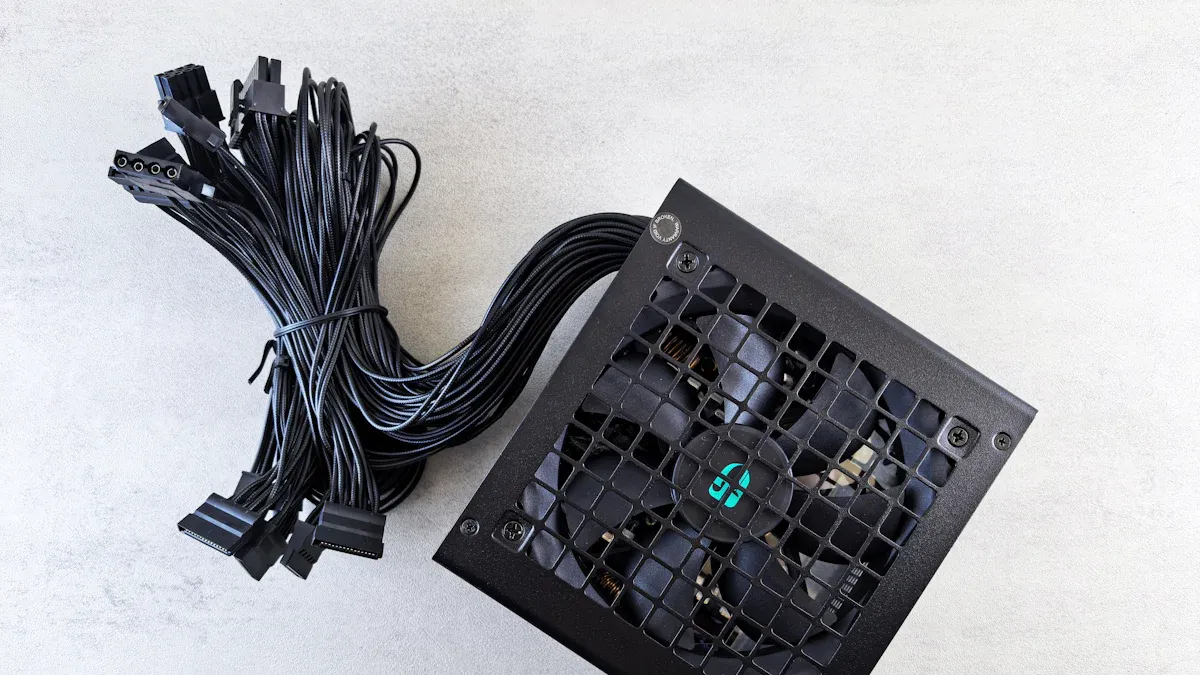
Patient Monitoring and Diagnostic Systems
ECG, EEG, and vital sign monitors
Micro-d connectors play a vital role in patient monitoring equipment. Engineers use these connectors to link sensors and electrodes—such as ECG, EEG, temperature, SpO2, and invasive blood pressure monitors—to diagnostic instruments. The connector ensures reliable signal transmission from the patient to the monitoring device. Hospitals demand equipment that withstands harsh environments, including exposure to chemicals and fluids. Micro-d connector applications in these systems support frequent connections and disconnections without loss of performance.
- Connectors enable wire-to-wire, wire-to-board, and board-to-board connections.
- They support miniaturization and high-density integration, allowing multiple power, signal, and RF lines in compact devices.
- Ruggedized designs resist vibration, shock, and repeated sterilization.
Note: Reliable connector applications in patient monitoring systems help maintain continuous, accurate data collection, which is essential for patient safety.
Portable and wearable health trackers
Portable and wearable health trackers rely on micro-d connectors for compact, lightweight designs. These applications require connectors that fit into small spaces while maintaining robust electrical performance. The connector supports the integration of sensors and communication modules, enabling real-time health monitoring outside clinical settings. Designers select micro-d connectors for their durability and ability to withstand frequent movement and environmental stress.
Imaging and Diagnostic Equipment
Ultrasound, MRI, and CT machines
Imaging equipment such as ultrasound, MRI, and CT machines depend on micro-d connectors for high-speed, high-density signal transmission. Portable and handheld ultrasound systems use micro-d and micro-coaxial assemblies to achieve miniaturization and maintain signal integrity. MRI machines require non-magnetic connectors to preserve image quality and prevent interference. In CT machines, micro-coaxial wire harnesses with micro-d connectors handle high-frequency signals up to 2.5 GHz.
- Connectors like I-PEX CABLINE-UM provide 360° EMI shielding and multi-point grounding.
- ITT Cannon’s DL and QLC series offer high mating cycle durability and miniaturization.
- These connector applications support the trend toward smaller, lighter, and more rugged imaging devices.
Handheld and point-of-care imaging devices
Handheld and point-of-care imaging devices benefit from micro-d connectors due to their compact size and high reliability. These applications require connectors that can handle frequent use and exposure to challenging environments. The connector ensures stable signal transmission, which is critical for accurate diagnostic results in mobile settings.
Surgical and Therapeutic Instruments
Endoscopic and laparoscopic tools
Endoscopic and laparoscopic tools use micro-d connectors to achieve miniaturization and flexibility. The connector enables the integration of cameras, sensors, and actuators within slender instruments. These applications demand connectors that withstand sterilization and repeated use without degradation.
Robotic surgical systems and therapeutic devices
Robotic surgical systems and therapeutic devices rely on micro-d connectors for precise control and feedback. The connector supports complex wiring and high-density signal transmission, allowing surgeons to perform delicate procedures with confidence. These connector applications must meet strict requirements for durability, electrical performance, and sterilization resistance.
Tip: Selecting the right connector for surgical and therapeutic instruments can improve device reliability and patient outcomes.
Implantable and Wearable Medical Devices
Cardiac pacemakers and neurostimulators
Cardiac pacemakers and neurostimulators require connectors that deliver long-term reliability and patient safety. Engineers select micro-d connectors for these applications because they support high-density integration in extremely compact spaces. The connector must transmit power, data, and sensor signals without failure. Manufacturers use medical-grade plastics, metals, ceramics, and high-performance polymers such as PEEK and PEK to construct these connectors. Hermetic sealing protects sensitive electronics from moisture and pressure changes inside the body. Biocompatibility standards ensure that the connector does not cause adverse reactions after implantation.
Micro-d connectors maintain signal integrity by minimizing electromagnetic interference and external noise. This feature is critical for devices that regulate heart rhythms or deliver neurostimulation. The connector must also withstand the body’s internal environment for many years. Engineers rely on these connector applications to provide safe, reliable, and compact solutions for life-sustaining devices.
Insulin pumps and drug delivery systems
Insulin pumps and drug delivery systems depend on connectors that offer both durability and flexibility. These wearable devices require connectors that can handle frequent movement and exposure to daily activities. Spring-loaded connectors with magnetic alignment and vibration resistance ensure stable contact during charging and docking. The connector must provide secure power and data transmission while remaining comfortable for the user.
Manufacturers design these connector applications to resist moisture, sweat, and accidental impacts. The use of biocompatible and environmentally resistant materials helps maintain device performance over time. Engineers often choose micro-d connectors for their ability to support miniaturization and high-density circuitry in compact wearable devices. This approach enables continuous monitoring and precise drug delivery, improving patient outcomes.
Laboratory and Point-of-Care Devices
Blood analyzers and sample processors
Blood analyzers and sample processors require connectors that support rapid, accurate data transfer. These applications often involve automated systems that process multiple samples in clinical laboratories. The connector must handle repeated connections and disconnections without loss of performance. Engineers select connectors with high mating cycle ratings and resistance to cleaning agents.
Connector applications in these devices must also provide protection against dust and fluid ingress. Manufacturers use sealing technologies and rugged materials to ensure reliable operation in demanding environments. The connector supports integration of sensors, actuators, and communication modules, enabling efficient sample analysis and data management.
Handheld diagnostic and testing tools
Handheld diagnostic and testing tools rely on connectors that combine compact size with robust performance. These applications include glucose meters, portable blood gas analyzers, and rapid antigen test devices. The connector must maintain stable electrical contact despite frequent handling and exposure to various environments.
Engineers choose connector applications that offer easy mating and unmating, even when users wear gloves. The connector must also resist vibration, shock, and moisture. Micro-d connectors provide the necessary durability and signal integrity for these portable devices. This reliability ensures accurate results and supports the growing trend toward point-of-care diagnostics.
Note: Reliable connector applications in both implantable and laboratory devices help advance patient care and streamline clinical workflows.
Selection Criteria for Micro-D Connectors in Medical Applications
Compliance and Quality Standards
Meeting FDA, ISO, and MIL-DTL-83513 requirements
Medical device manufacturers must ensure that every connector meets rigorous compliance and quality standards. These standards protect both patients and operators by setting strict requirements for safety, durability, and electrical performance. Micro-d connectors must withstand sterilization methods such as autoclaving, Ethylene Oxide (EtO), gamma radiation, and chemical washdown. Ingress protection ratings, especially IP68, are essential for preventing dust and fluid ingress in both mated and unmated states.
Quality certifications and regulatory approvals play a vital role in the selection process. The following table summarizes key standards and their purposes:
| Standard | Purpose/Description |
|---|---|
| IEC 60601-1 | Specifies patient and operator protection requirements, including creepage, clearance, and leakage current limits for medical electrical equipment. |
| ISO 13485 | Defines quality management system requirements specific to medical device manufacturing. |
| ISO 80369 | Addresses patient safety by reducing risks of misconnections between medical devices and accessories. |
| ISO 5356 | Specifies dimensional requirements for connectors used in anesthetic and respiratory equipment. |
Manufacturers also seek certifications such as UL, CSA, NEMA, FDA registration, CE marking, and Japanese Ministry of Health accreditation. Connector types must use medical-specific shell materials that limit harmful substances like DEHP and resist radiation exposure. Ergonomic features, including polarization and color coding, help ensure safe and reliable connections in clinical environments.
Traceability and certification for medical use
Traceability and certification processes guarantee that micro-d connectors meet the highest standards for medical applications. Manufacturers implement ISO 13485 quality management systems to maintain consistent safety and quality throughout the product lifecycle. Compliance with FDA regulations and EU MDR supports legal and ethical obligations in medical device manufacturing.
A structured approach to traceability includes:
- Detailed documentation and standard operating procedures (SOPs) for every production step.
- Internal audits that enable early error detection and process control.
- Systematic risk management, including failure mode effect analysis, to identify and mitigate potential failures.
- Continuous quality improvement through operator training, process control, and lean manufacturing techniques.
- External verification and periodic inspection readiness to ensure ongoing compliance.
This comprehensive framework ensures that each connector meets precise manufacturing tolerances, biocompatibility, sterilization, and safety requirements. Quality assurance protocols, such as rigorous testing and traceability, support contamination-proof and reliable connectors suitable for critical medical environments.
Durability, Maintenance, and Lifecycle
Expected mating cycles and resistance to cleaning agents
Durability remains a top priority in the selection of micro-d connectors for medical devices. Metal shell connectors, often made from stainless steel or specialized polymers, are engineered for harsh environments. These connectors undergo rigorous testing for vibration and shock resistance, ensuring long-term performance and reliability.
Environmental factors such as humidity, temperature, salt mist, and mechanical stress can impact connector durability. The table below outlines these factors and their implications:
| Environmental Factor | Impact on Micro-D Connectors Durability | Maintenance Implications |
|---|---|---|
| Humidity | Corrosion of metal parts and insulation degradation, reducing service life. | Use materials less affected by humidity; monitor for corrosion. |
| Temperature | High temperatures accelerate wear and reduce contact life. | Maintain operating temperature within limits; consider heat dissipation. |
| Salt Mist | Corrodes metal parts, degrading performance. | Avoid salty environments or use protective coatings. |
| Vibration and Shock | Mechanical wear and compromised connection robustness. | Use connectors tested for vibration and shock; inspect regularly. |
Micro-d connectors are designed to withstand high mating cycles, often up to 10,000 cycles, and resist rough handling. Manufacturers use corrosion-resistant materials, such as chrome-plated brass and medical-grade plastics like PEEK, to endure repeated cleaning and sterilization. Silicone and PPSU plastics offer excellent resistance to drying, hardening, and high temperatures, supporting longer sterilization cycles and high chemical resistance. Ceramic/metal sealing technology prevents moisture and gas penetration, protecting internal components from corrosion and degradation.
Tip: Selecting connectors with proven resistance to cleaning agents and sterilization processes extends device lifespan and reduces maintenance needs.
Maintenance needs for long-term reliability
Routine maintenance ensures that connectors continue to deliver optimal performance over time. Regular inspection for signs of corrosion, wear, or mechanical damage helps prevent unexpected failures. Operators should follow manufacturer guidelines for cleaning and sterilization to maintain connector integrity. Using connectors with low friction coatings on cables can facilitate easier cleaning and disinfection. Manufacturers recommend periodic testing of electrical contacts and mechanical latching mechanisms to ensure continued reliability in demanding medical environments.
Electrical and Signal Performance Specifications
Current and voltage ratings for medical electronics
Electrical performance is a critical factor in the selection of micro-d connectors for medical devices. These connectors must support the current and voltage requirements of advanced medical electronics while maintaining compact size and high pin density. Typical specifications include:
| Characteristic | Specification | Test Method |
|---|---|---|
| Current Rating | Up to 3 A max. | EIA-364-70 |
| Contact Resistance | Maximum 10 mΩ | EIA-364-06 |
| Insulation Resistance | Minimum 5000 MΩ at 500 Vdc | EIA-364-21 |
| Dielectric Withstanding Voltage | 600 Vac (sea level) | EIA-364-20 |
| Durability | Minimum 500 mating cycles | EIA-364-09 |
| Temperature Range | -55°C to +125°C (standard); up to +200°C (high temp) | N/A |
Micro-d connectors meet or exceed MIL-DTL-83513 specifications, ensuring robust performance in high-reliability applications. USB 3.0 micro-d variants support higher signal speeds and environmental sealing, addressing the needs of modern medical electronics.
Ensuring low contact resistance and high signal integrity
Maintaining low contact resistance and high signal integrity is essential for accurate diagnostics and patient safety. Micro-d connectors use a beryllium copper spring pin to socket contact system, plated with nickel and gold. This design guarantees high-quality mating and de-mating with minimal contact resistance. Manufacturers engineer these connectors to withstand shock, vibration, and extreme environments, preserving signal quality even in challenging conditions.
Proper PCB layout and connector pad design minimize crosstalk, noise, and EMI. These features are crucial for medical devices that require precise and reliable signal transmission. High pin counts in small spaces support complex multi-line interconnections, enabling advanced functionality in compact medical devices.
Note: Reliable electrical performance and signal integrity in micro-d connectors directly contribute to the safety and effectiveness of medical devices.
Customization and Integration Capabilities
Custom pin layouts and cable assemblies
Medical device engineers often require specialized interconnect solutions. Micro-d connectors offer a wide range of custom pin layouts to support unique signal, power, and data requirements. Manufacturers design each connector to fit the specific needs of the device. Engineers specify the number of contacts, their arrangement, and the type of signal each pin carries. This flexibility allows the connector to support advanced features in compact medical devices.
Cable assemblies also play a critical role in device performance. Manufacturers build custom cable assemblies that match the connector’s pin configuration. Shielded cables protect sensitive signals from electromagnetic interference. Strain relief features prevent damage during repeated use. Engineers select materials that withstand sterilization and harsh cleaning agents. Each connector and cable assembly undergoes rigorous testing to ensure reliability in clinical environments.
Tip: Custom pin layouts and cable assemblies help engineers optimize device performance and meet strict regulatory standards.
Seamless integration with existing device architectures
Integrating a new connector into an established device architecture requires careful planning. Engineers evaluate the mechanical and electrical compatibility of the connector with the device’s printed circuit board (PCB) and enclosure. Manufacturers offer a variety of mounting options, including surface-mount, through-hole, and panel-mount styles. These options allow the connector to fit seamlessly into the device’s design.
Connector integration also involves matching the connector’s footprint and mating interface with existing components. Engineers use 3D models and CAD drawings to verify fit and alignment. Manufacturers provide detailed technical documentation to support the integration process. The connector’s modular design enables easy upgrades and future scalability. Device designers benefit from reduced development time and improved reliability.
A table below summarizes key integration features for micro-d connectors:
| Integration Feature | Benefit for Medical Devices |
|---|---|
| Multiple mounting styles | Flexible placement on PCB or enclosure |
| Modular design | Supports upgrades and scalability |
| Detailed documentation | Simplifies design and verification |
| Custom footprints | Ensures compatibility with existing layouts |
Note: Seamless integration of micro-d connectors streamlines device development and enhances long-term reliability.
Cost, Supply Chain, and Availability
Balancing performance with budget constraints
Medical device manufacturers must balance connector performance with budget constraints. High-quality connectors often come with increased costs due to advanced materials, precision engineering, and rigorous testing. Engineers assess the total cost of ownership, including initial purchase price, maintenance, and expected lifespan. Selecting the right connector can reduce long-term expenses by minimizing failures and maintenance needs.
Manufacturers offer a range of connector options to suit different budget levels. Standard connectors provide reliable performance for less demanding applications. Custom connectors address specialized requirements but may increase costs. Engineers compare features such as contact density, environmental sealing, and mechanical durability to determine the best value for each project.
A checklist for cost-effective connector selection:
- Define performance requirements for the medical device.
- Evaluate standard versus custom connector options.
- Assess long-term reliability and maintenance costs.
- Consider supplier support and warranty terms.
Callout: Careful connector selection helps manufacturers achieve optimal performance without exceeding budget limits.
Sourcing medical-grade micro-d connectors from reliable suppliers
Reliable sourcing ensures that medical devices meet regulatory standards and maintain consistent quality. Manufacturers partner with trusted suppliers who specialize in medical-grade connectors. These suppliers provide documentation for compliance with FDA, ISO, and MIL-DTL-83513 standards. Engineers verify that each connector meets biocompatibility and sterilization requirements.
Supply chain stability is essential for timely production and device delivery. Manufacturers choose suppliers with proven track records in the medical industry. They review supplier certifications, production capacity, and quality control processes. Engineers request samples and conduct thorough testing before approving a connector for use in a device.
A list of best practices for sourcing medical-grade connectors:
- Work with suppliers who offer traceability and certification.
- Request technical support and detailed product documentation.
- Evaluate supplier responsiveness and delivery timelines.
- Confirm compatibility with sterilization and cleaning processes.
Block Quote: Reliable sourcing of medical-grade connectors supports device safety, regulatory compliance, and uninterrupted production.
Practical Guidance for Engineers and Product Managers
Assessing Application Requirements for Micro-D Connectors
Matching connector specifications to device needs
Engineers and product managers must carefully match connector specifications to the unique requirements of their medical device applications. Each application presents different challenges, such as signal integrity, environmental exposure, and mechanical stress. To ensure optimal performance, teams should:
- Understand the system topology, such as point-to-point or multi-drop configurations.
- Identify the termination type and clocking method.
- Specify the signaling type and data encoding scheme.
- Define the signal technology and data rate.
- Establish system impedance and crosstalk requirements.
- Consider skew and timing alignment.
- Choose the shortest connector possible to minimize reflections.
- Optimize the signal-to-ground ratio for best performance.
Selecting the right connector involves more than just pin count or size. Teams must also match backshell material and plating to prevent corrosion, assess environmental sealing needs, and define the operating temperature range. Strain relief, EMI/RFI protection, and termination style compatibility all play a role in reliable device operation. Dimensional constraints and repairability should guide the final selection.
Tip: Early and thorough assessment of application requirements reduces the risk of costly redesigns and ensures the connector supports both current and future device needs.
Planning for scalability and future upgrades
Medical device development often requires flexibility to accommodate evolving standards and new features. Teams should plan for scalability by selecting connectors that allow for additional contacts or higher data rates as applications grow. Modular connector designs and custom modifications can support future upgrades without major redesigns. By considering regulatory compliance and integration with both hardware and software components, teams can future-proof their devices and streamline the path to market.
Collaborating with Suppliers and Manufacturers
Evaluating technical support and documentation
Collaboration with suppliers and manufacturers enhances the selection and integration process for micro-d connectors. Early engagement with experienced partners enables design for manufacturability, material recommendations, and risk reduction. Suppliers who provide comprehensive technical documentation, such as 3D models and detailed specifications, help engineers verify compatibility and streamline integration. Design support and tooling expertise from manufacturers can transform concepts into reliable components for demanding medical applications.
Prototyping and testing for medical compliance
Prototyping and rigorous testing ensure that the chosen connector meets medical compliance standards. Manufacturers often assist with custom designs tailored to specific applications, such as surgical robotics or high-speed imaging. These collaborations result in connectors that balance durability, weight, and flexibility, while meeting requirements for sterilization and environmental sealing. Testing for vibration, shock, and repeated sterilization cycles confirms that the connector will perform reliably in real-world medical environments.
Note: Strong supplier relationships lead to optimized material selection, design refinement, and improved project outcomes for medical device applications.
Avoiding Common Pitfalls in Micro-D Connector Selection
Overlooking sterilization and environmental compatibility
One common pitfall involves neglecting the connector’s compatibility with sterilization methods and environmental conditions. Medical applications often require repeated exposure to autoclaves, chemicals, or moisture. Selecting a connector without verifying its resistance to these factors can lead to premature failure or safety risks. Teams should always confirm that the connector’s materials and sealing meet the demands of the intended application.
Underestimating the importance of IP ratings and EMI protection
Another frequent mistake is underestimating the significance of IP ratings and EMI protection. Inadequate ingress protection can result in dust or fluid contamination, compromising device reliability. Insufficient EMI shielding may cause signal degradation, especially in high-density or high-speed applications. Engineers should prioritize connectors with appropriate IP ratings and integrated EMI/RFI protection to ensure safe and effective device operation.
Callout: Careful attention to sterilization, environmental compatibility, and protection features prevents costly failures and supports the success of medical device applications.
Micro-d connectors drive innovation in medical device design. They improve reliability, safety, and miniaturization across many applications. Engineers and product managers can unlock new possibilities by exploring micro-d connector solutions for next-generation medical technology. For tailored recommendations, consulting with micro-d connector experts ensures the best fit for specific device needs.
For advanced medical applications, expert guidance helps teams achieve optimal results.
FAQ
What are micro-d connectors used for in medical devices?
Micro-d connectors provide compact, reliable connections for power, data, and signals in medical devices. Engineers use them in patient monitors, imaging equipment, surgical tools, and implantable devices to support miniaturization and enhance device reliability.
How do micro-d connectors improve patient safety?
Manufacturers design micro-d connectors with biocompatible materials and secure locking mechanisms. These features prevent accidental disconnections and reduce the risk of contamination, supporting patient safety in critical medical environments.
Can micro-d connectors withstand repeated sterilization?
Micro-d connectors often use materials like stainless steel, PEEK, and silicone. These materials resist autoclave, chemical, and radiation sterilization. This durability ensures connectors maintain performance after many cleaning cycles.
What is the typical lifespan of a micro-d connector?
Most micro-d connectors support thousands of mating cycles. High-quality models can reach up to 10,000 cycles, depending on the application and maintenance. This long lifespan suits demanding clinical and laboratory environments.
Are micro-d connectors suitable for wire-to-board applications?
Engineers often select micro-d connectors for wire-to-board applications in medical devices. These connectors provide secure, high-density connections between cables and printed circuit boards, supporting compact device designs.
How do micro-d connectors protect against EMI and RFI?
Micro-d connectors feature 360° shielding and integrated EMI filters. These features block electromagnetic and radio-frequency interference, ensuring stable signal transmission in environments with many electronic devices.
Can micro-d connectors be customized for unique medical devices?
Manufacturers offer customization options for pin layouts, shell sizes, and cable assemblies. This flexibility allows engineers to meet specific electrical, mechanical, and environmental requirements for advanced medical devices.
What standards do micro-d connectors meet for medical use?
Micro-d connectors comply with standards such as IEC 60601, ISO 13485, and MIL-DTL-83513. These certifications ensure safety, quality, and reliability in medical device applications.

